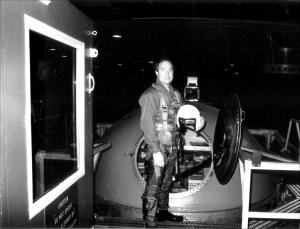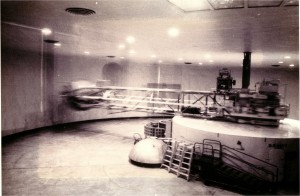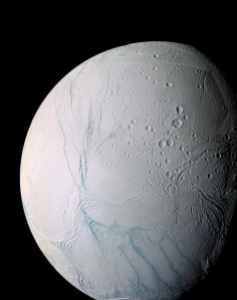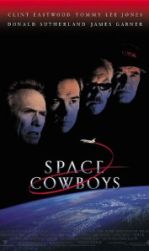In June of 2021, the Director of National Intelligence made a guarded announcement that UFOs/UAPs might be of extraterrestrial origin.
UFO experiencers greeted that revelation with amusement. In terms of the childhood searching game hot and cold, the ODNI statements were “lukewarm” as far as searchers for truth were concerned.
Mind you, lukewarm is far better than the frigid denial that existed a scant ten years ago. This new attitude, forced by the encounters of Navy aviators with bizarre aerial phenomena, is refreshing. It represents yet another crack in the UFO-denial barrier that has long blocked serious discussion of the matter. So, even lukewarm is welcomed by truth seekers.
Eric Haseltine

Eric Haseltine, Ph.D. is a neuroscientist having served in the National Security Agency (NSA) and the Office of National Intelligence (ODNI.) Reportedly, he was the Associate Director of National Intelligence.
On November 29, 2021, Haseltine reported in Psychology Today his take on the June ODNI Intelligence Report on UAP.
Quoting Haseltine:
I was stunned when the Office of the Director of National Intelligence (where I was Director of Science and Technology) issued a report this June, Preliminary Assessment: Unidentified Aerial Phenomena (UAPs).
What he said next was remarkable.
The objects either represent exciting extensions of known science (such as directed energy physics) or exploit features of exotic unknown science (such as faster-than-light travel through gravitational worm holes).
No doubt in keeping with his Nondisclosure Agreements, Haseltine chose the safe route and discussed the possibilities that UAPs might be using known science. However, he did offer the strange theory that UAPs may have zero mass.
Thankfully, Haseltine raised the informational temperature a tad higher than room temperature. But the feeling I got was that for understandable reasons, he left out the good stuff.
NASA’s Bill Nelson
NASA Administrator Bill Nelson, a former Army Captain, and NASA astronaut, recently made an intriguing observation. During a 19 October interview hosted by the University of Virginia Center for Politics, Nelson said that while he didn’t know the source of the “UAPs” that were daily hounding Navy aviators, he did believe that the most credible theory was that they were extraterrestrial—and possibly extradimensional.
In childhood game parlance, Nelson was getting “hot.” The notion of extradimensional raises a whole new level of scientific interest. In journalistic terms of what, when, and where, the most critical question, how, is finally being publicly voiced.
Luis Elizondo
But what the heck does extradimensional mean in laymen’s terms? Well, Luis (Lue) Elizondo recently told us in an interview published by GQ, Gentlemen’s Quarterly. His explanation is in game-speak, “burning up.”
Here is a long but informative quote from that article.
“The proposed new UAP office would have to report on health-related effects for individuals who have experienced UAPs. What kind of thing might happen if you were near one?
A lot. Let me give you a notional… I’ve got to be careful, I can’t speak too specifically, but one might imagine that you get a report from a pilot who says, “Lue, it’s really weird. I was flying and I got close to this thing and I came back home and it was like I got a sunburn. I was red for four days.”Well, that’s a sign of radiation. That’s not a sunburn; it’s a radiation burn.
Then [a pilot] might say, if [they] had got a little closer, “Lue, I’m at the hospital. I’ve got symptoms that are indicative of microwave damage, meaning internal injuries, and even in my brain there’s some morphology there.”
Space-Time Warp
“And then you might get somebody who gets really close and says, “You know, Lue, it’s really bizarre. It felt like I was there for only five minutes, but when I looked at my watch 30 minutes went by, but I only used five minutes’ worth of fuel. How is that possible?”
Well, there’s a reason for that, we believe, and it probably has to do with warping of space-time. And the closer you get to one of these vehicles, the more you may begin to experience space-time relative to the vehicle and the environment.“
Right now one of the leading theories out there is that someone has figured out a way to manipulate space-time and, in essence, master the idea of antigravity.
This man ran the Pentagon’s secretive UFO programme for a decade. We had some questions. GQ, 9 November, 2021.
Harold Puthoff
I have had the pleasure of talking on the phone with Lue Elizondo for a half hour or so, and of hosting Dr. Hal Putoff, Ph.D. in the Navy’s diving laboratory. Long ago, Puthoff directed programs on advanced sensing techniques (Remote Viewing) for the intelligence community. However, Hal’s Science Seminar at our Navy lab was on the potential harnessing of zero-point energy. Very strange stuff, that.
Lue is the most recognizable face of the former Pentagon UAP Investigation program. On the other hand, Hal is the brain that is trying to decipher the how of UAP propulsion systems. For years, those two men have worked closely together.

Hal’s physics credentials are legion. For example, Hal has over 50 years of experience as a Research Scientist at General Electric, the NSA, Stanford University, Sperry & SRI International. He is an Advisor to NASA, the Department of Defense, and the Intelligence Community on leading-edge technologies and future technology trends. He holds patents in the laser, communications, and energy fields.
Because of Hal’s rich experience with classified projects, he remains hidden in the background regarding the journalistic how question of UAPs. But what Hal thinks undoubtedly rubs off on Lue, the cagey spokesman. So, what Lue says in unclassified publications like GQ has importance.
Space-Time Bubbles
Without a doubt, the esoteric theories of advanced physics, string theory, and minuscule curled “extra” dimensions present in a quantum world are inaccessible to our layman minds. However, if perchance a Navy pilot has reported something akin to what Elizondo reported regarding a close-up encounter with a UAP, then we have learned something of immense importance about space-time bubbles.
Space-time bubbles are something we can actually imagine, as long as we don’t get too far into the details. And that is a startling revelation.
No Gravitational Influence?
However, that revelation has embedded within it the most inscrutable of all mysteries.
The types of UAP motion witnessed by aircraft and shipboard sensing systems defy understanding. They have been observed to blink out and almost instantaneously appear 60 miles away. In conventional physics, that type of motion would generate acceleration forces (G-forces) that would destroy flesh and blood, and airframes. It is unsurvivable.
A series of Techno Thrillers collectively called the Jason Parker Trilogy, features a protagonist who travels in recovered alien spacecraft both undersea and in space. While virtually every other science fiction story ignores inertial forces, the JP Trilogy dutifully includes it. Inertia is an unavoidable fact of life in our dimensional universe.

However, in a cosmos where space-time bubbles can pop into and out of our existence, the rules of physics must change. Quite possibly, interstellar travelers could be relaxing in their Stressless chairs while performing unimaginable aerobatics, from our perspective.
When Haseltine posits that the UAPs have no mass, he might be correct. They could be in a space-time bubble outside of our dimensional space, and therefore not influenced by our gravitational and inertial forces.
But there remains the nagging question that Elizondo and Puthoff, Haseltine and NASA, have not, and probably cannot, answer—How do you create a space-time bubble?

























